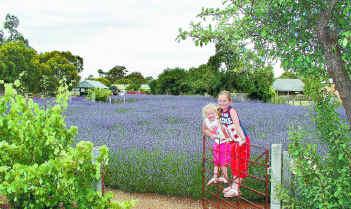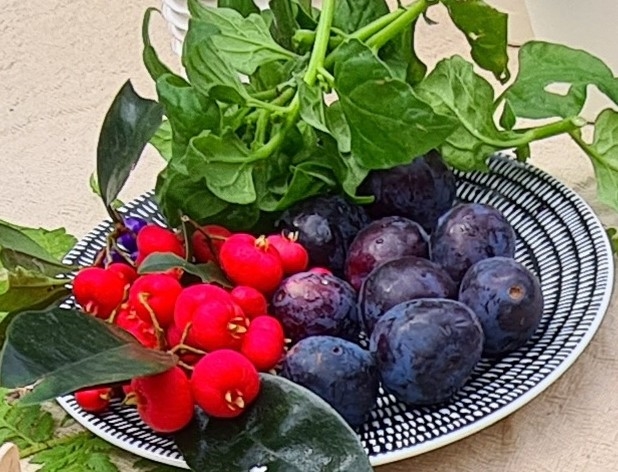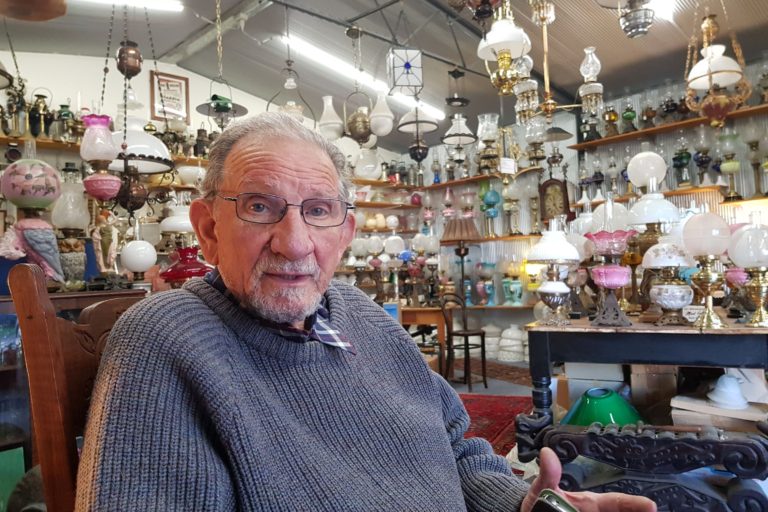By Neena Bhandari
Penola (South Australia), 02.08.2010 (The Hindu Businessline): Nestling amidst pine forests, farms and vineyards in South Australia is the town of Penola known for its Petticoat Lane. Unlike London’s famous markets, this Petticoat Lane is known for its historic stone and timber cottages and the women who resided there.It is said that at one time there were so many petticoats hung on the clothesline that the street came to be aptly called `Petticoat Lane’.
The frills and fragrance associated with the name are evident in the many businesses run by women in the lane today.
The gateway to the Lane is the 1867 schoolhouse of Mary MacKillop, who co-founded the Sisters of St Joseph of the Sacred Heart with Father Tenison Woods in the 1860’s. In recent times, Penola has gained international recognition as the workplace and one-time home of Mother Mary MacKillop, beatified by the Pope in January 1995 and nominated as Australia’s first saint.
The Lane is dotted with English Hawthorn hedges, red and pink roses and tufts of iris, almond, plum and apricot blossoms. The century old cedar tree and tall red gum trees still stand as a testimony to a bygone era as much as the 1850s small pioneer cottages, now protected and preserved by the Penola branch of the National Trust South Australia. The cottages are leased and the rent is used for their maintenance.
The Sharam’s Cottage, which is known as the first private residence in Penola, retains much of its yesteryear charm and character. It was built by Christopher Sharam, the town’s first bootmaker who was invited by the founder of Penola, Alexander Cameron. It has two rooms where his wife Ellen, 20 years younger than him, produced nine sons and six daughters.
The Sharam’s second child, William, is thought to be the first White child born in this primarily Aboriginal (Indigenous Australians) inhabited area. He grew up as a `brother’ to his dark-skinned neighbours and Ellen became healer, adviser and confidante to its residents. She was highly admired and called the `Granny’ of Petticoat Lane as she retained her dignity through those years of toil and suffering. The Sharams had 56 grandchildren.
While part of the cottage is preserved, portraying the pioneer living standards of the 1890s, the rest has been leased out to Sandra Gray, a former teacher and director of kindergarden education, who has been running children’s toys, teddies and dolls shop in it for the past 11 years. “The enterprise within the cottage has helped keep it alive. We look after the cottage and pass the history to the tourists seven days a week. The National Trust otherwise would have found it difficult to get volunteers to work all seven days”, says Sandra.
The nearby Wilson’s Cottage houses a linen and lace enterprise. It was chance that brought Nesta Wilson to start her bed and table linen shop in the cottage, but for the past 19 years since she first set shop, there has been no looking back. She has included Portuguese glassware and exclusive homeware to her collection with the bulk of her business coming from inter-state and local visitors.
“It was a special feeling to start an enterprise in this historic cottage. I have enjoyed passing the history though sometimes it does get monotonous”, adds Nesta.
The four-roomed cottage belonged to William Wilson, who was known for his fruits and flowers. When gold was discovered in the state of Victoria, he left Penola. His wife brought up their children by washing and mending for others. It is said one morning she woke up to find Aborigines stacking wood against the walls of the hut and terrified, she thought the cottage was going to be burnt down. The Aborigines explained that they were “bringing wood for the Missus while the boss was away”. Such was the harmony between the locals and White settlers then.
Little further away, the Gammon Cottage belonged to Philip and Mary Ann, who had eight daughters and two sons. Their grand daughter, Elvina Lawrence, explains how the girls’ bedroom could be entered only from the main bedroom and had no outside door. Phillip Gammon’s mother Hannah was good at needlework and was also a midwife.
Today the cottage is a fairy tale and lavender products outlet. Debra Cox, proprietor, designs and produces her own range of cosmetics, therapeutic accessories, massage oils and craft items made from lavender. She, who always had a passion for gnomes and fairies, started the fairy tale shop based on the theme of `fairies in the garden’ where she conducts special story telling sessions for children.
Adjacent to it, is the large lavender farm that has 60 different varieties, out of which 20 to 30 produce oil. In the past, it used to be a market garden catering to the locals’ fresh fruit and vegetable needs. Debra says, “This land was lying neglected and I decided to take it on lease to start a lavender farm. The harvest this year has been very good, we have had 20 kg of lavender. We are also researching on which variety of lavender grows best in this environment”.
A little further away is the rectory or the residence of the minister of religion, which Debra has restored and converted into a bed and breakfast retaining the old charm and providing all the modern comforts to tourists.
Across the rectory was a vacant plot of land, which has been transformed into an herb garden by Jenny Hinze, a wife, mother and businesswoman. She concentrates on culinary herbs and has been selling value added herb products like dressings and pastes at the local farmers market.
Jenny says, “I have been involved in growing, drying and packaging of herbs and thought this was the right thing to do in Petticoat Lane. While this is a tourist precinct, majority of my customers are locals, who look after and respect the farm as I spend very little time on it physically. Customers pick their own herbs and measure according to the instructions displayed at the farm and payment is on an honesty system”. Jenny hopes to start an outlet for seeds and saplings, fresh and dry herbs and herbal teas and craftwork.
History researcher, Evelynne Bowden says, “As it transpires the businesses conducted in Petticoat Lane are all operated by women who take great pride in passing on the history of the area to willing listeners. It is not only a place of local pride, but Petticoat Lane is a great tourist attraction for its history and architecture”.
A stroll down Petticoat Lane brings alive the colonial buildings through the outlets it houses today. The Lane has brought this town of 1,250 people on the tourist map of South Australia, a state of free settlers that has credit for many firsts in upholding women’s rights.
GETTING THERE
AIR: Qantas and Virgin Blue fly regularly to Adelaide; O’Connor Airlines operates between Adelaide, Mt Gambier, Melbourne and Mildura; and Regional Express operates across all the five states.
RAIL: The Indian Pacific operates between Sydney, Adelaide and Perth;
The Overland operates between Melbourne and Adelaide; and The Ghan operates either from Melbourne, Adelaide or Sydney to Alice Springs.
ROAD: There are several coach companies which have tours to Penola and Coonawara.
CAR: Penola is 388km from Adelaide and 52 km from Mount Gambier on the Riddoch Highway. We drove through this scenic drive dotted with roses and flowers.
ACCOMMODATION
- Cobbs and Co cottages, 2 Portland Street, Penola. We stayed in one of these luxurious self-contained cottages, built in heritage style. Skilfully blending history with state-of-the-art luxury and elegant décor, the cottages are available from AUD 115 a night with breakfast. The superb spa was an absolute delight. It is only a short walk from Petticoat Lane.
- Coonawarra Motor Lodge, 114 Church Street, Penola
- Heyward’s Royal Oak, Church Street, Penola
- Prince of Wales Hotel-Motel, Church Street.
- Sarah’s Cottages 24 Julian Street West.
- Naomi’s Villa, 20 Riddoch Street.
- Susie’s B&B, 110 Church Street
VISITOR INFORMATION
Penola-Coonawarra visitor centre
27 Arthur Street , Penola 5277.
+61 08 8737 2855
The staff was very friendly, helpful and willing to tell you all about the town’s past and present.
ACTIVITIES
Penola is bustling with artists, antiques, galleries, good cafes and gifts.
Excellent restaurants and cafés serving great food to tantalise and tease your taste buds along with some of the country’s finest wines.
Visit Mary Mackillop Interpretive Centre, rose garden and schoolhouse; Penola Conservation Park, a haven for breeding birds; The John Riddoch Interpretive Centre to learn about early Penola and the Hydrocarbon centre, which tells the story of the discovery of natural gas in the district.
© Copyright Neena Bhandari. All rights reserved. Republication, copying or using information from neenabhandari.com content is expressly prohibited without the permission of the writer and the media outlet syndicating or publishing the article.





Fantastic story about Petticoat Lane. I love the diversity of the small communities around Aust.